Mehrsan Javan Roshtkhari
Deep Learning of Appearance Models for Online Object Tracking
Jul 09, 2016


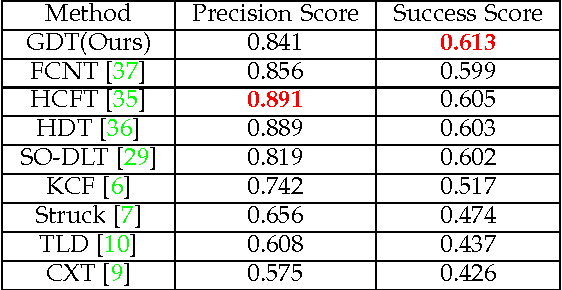
Abstract:This paper introduces a novel deep learning based approach for vision based single target tracking. We address this problem by proposing a network architecture which takes the input video frames and directly computes the tracking score for any candidate target location by estimating the probability distributions of the positive and negative examples. This is achieved by combining a deep convolutional neural network with a Bayesian loss layer in a unified framework. In order to deal with the limited number of positive training examples, the network is pre-trained offline for a generic image feature representation and then is fine-tuned in multiple steps. An online fine-tuning step is carried out at every frame to learn the appearance of the target. We adopt a two-stage iterative algorithm to adaptively update the network parameters and maintain a probability density for target/non-target regions. The tracker has been tested on the standard tracking benchmark and the results indicate that the proposed solution achieves state-of-the-art tracking results.
Deep Structured Models For Group Activity Recognition
Jun 12, 2015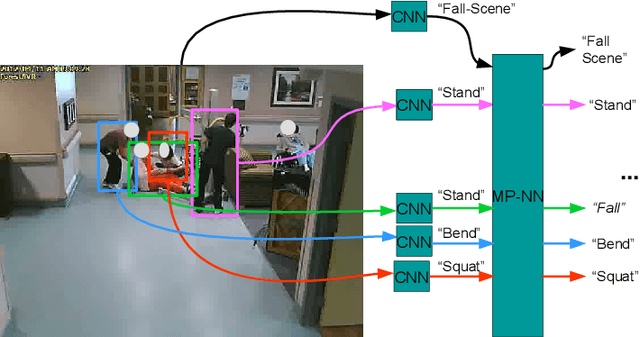

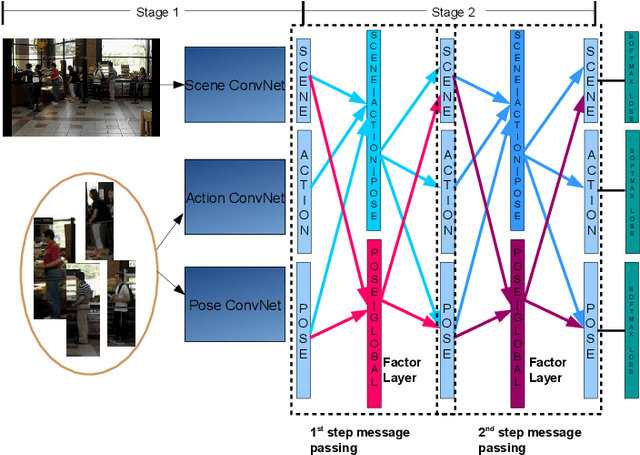

Abstract:This paper presents a deep neural-network-based hierarchical graphical model for individual and group activity recognition in surveillance scenes. Deep networks are used to recognize the actions of individual people in a scene. Next, a neural-network-based hierarchical graphical model refines the predicted labels for each class by considering dependencies between the classes. This refinement step mimics a message-passing step similar to inference in a probabilistic graphical model. We show that this approach can be effective in group activity recognition, with the deep graphical model improving recognition rates over baseline methods.
Discovering Human Interactions in Videos with Limited Data Labeling
Feb 12, 2015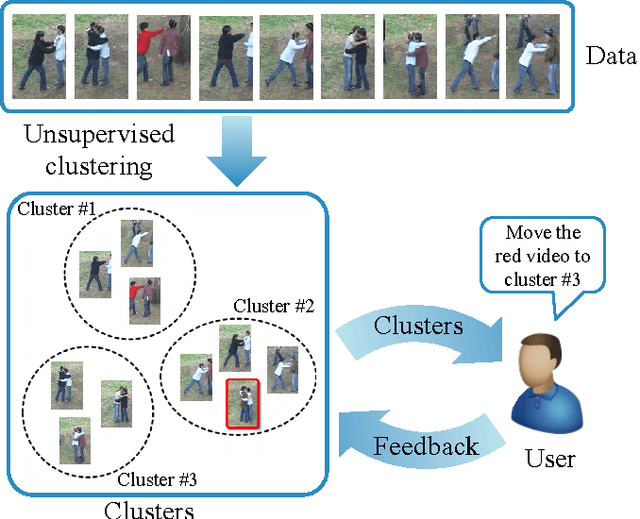
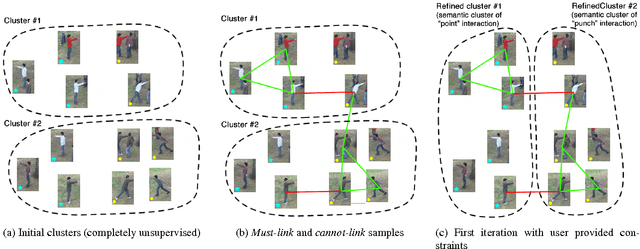


Abstract:We present a novel approach for discovering human interactions in videos. Activity understanding techniques usually require a large number of labeled examples, which are not available in many practical cases. Here, we focus on recovering semantically meaningful clusters of human-human and human-object interaction in an unsupervised fashion. A new iterative solution is introduced based on Maximum Margin Clustering (MMC), which also accepts user feedback to refine clusters. This is achieved by formulating the whole process as a unified constrained latent max-margin clustering problem. Extensive experiments have been carried out over three challenging datasets, Collective Activity, VIRAT, and UT-interaction. Empirical results demonstrate that the proposed algorithm can efficiently discover perfect semantic clusters of human interactions with only a small amount of labeling effort.
 Add to Chrome
Add to Chrome Add to Firefox
Add to Firefox Add to Edge
Add to Edge